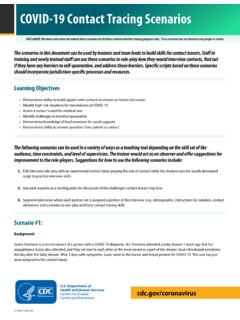Transcription of Future of food - Deloitte
1 Future of foodHow technology and global trends are transforming the food industry Uber EatsLimitation of our workGeneral use restrictionThis report is prepared solely for the use of Uber. This report is not intended to and should not be used or relied upon by anyone else and we accept no duty of care to any other person or entity. The report has been prepared for the purpose of exploring possible scenarios around the Future of food . You should not refer to or use our name or the advice for any other Eats Future of foodContentsThe state of play 1 Changing tastes 4 Scenario analysis 8 One plate at a time 10 Data driven food 12 Master chef 14 On trend 164 Future of food Uber EatsEvery day, billion people around the world eat, consuming million tonnes of what, when, where and how we eat varies significantly by country and by consumer.
2 Nowhere is that more evident than in the Asia Pacific. The region is home to more than half of the world s population billion people, and dozens of cultures. Each country has its own unique food traditions and preferences, from the spices of India to the seasonal flavours of Japan. And each offers a range of ways of eating, from street food to fine region is home to a diverse and interrelated food ecosystem, from producers to retailers to consumers, which supports the rich food culture. Yet as technology and consumer preferences shift, what and how we eat is changing, sometimes in unexpected food ecosystem, and the relationship between its players, is evolving to adapt to these changes.
3 This can feel challenging and uncertain for those in the industry. But with this change comes many new opportunities for this report, Uber Eats has asked Deloitte to explore different possible scenarios for the Future of food , and what they mean for food businesses in the Asia Eats Future of foodThe state of playFood is a large and growing industry. Sometimes, food is simple; straight from the farm to our plates. But more often, what we eat has been crafted by a range of people grown by farmers, processed by manufacturers, sold to grocers, and finally cooked by restauranteurs.
4 As a result of changing technology, consumer preferences, globalisation and demographics, the industry is evolving. The food ecosystem is becoming more complex and more interdependent. This is driven by consumers, whose spending on food , and food decisions, are shifting. Before we examine the Future of the food industry in the Asia Pacific, it s important to look at the state of play today. The food ecosystemHistorically, each player in the food chain was distinct and operated independently. There was a reasonably clear linear process to get food from paddock to plate (Figure 1).
5 But, like in many other industries, this landscape is changing (Figure 2). New technologies are creating a more diverse food ecosystem. This ranges from new food manufacturers (for instance, the manufacturers of synthetic meats), to the rise of technology-enabled platforms which connect food businesses to consumers, and online-only players offering convenient food at lower prices. Changing consumer preferences are blurring the traditional boundaries between players. Grocers are starting to offer prepared meals, for increasingly interconnected and interdependent food ecosystem is creating more value and choices for consumers.
6 The price of raw ingredients is fallingi (for example, the global cost of wheat has fallen 35% in real terms over the past 30 years),2 but the total value of food is increasing; a result of more players adding value through the supply chain. Figure 2: The food ecosystem todayEach individual player has an important role in the food ecosystem today, but it is through interactions that the industry creates sustenance, and experiences, for the following pages, we look at the current state of the food industry.
7 Specifically, we focus on the big picture numbers, spending on food and on prepared/ready to eat meals, and we drill down into food 1: The food ecosystem in the pasti This is a result of technological advances, globalisation, and increasing of food Uber EatsThe food budgetFood is a part of every household budget, yet the amount we spend can vary greatly. At the turn of the millennium, household spending on food as a proportion of disposable income in the region ranged from 8% (Hong Kong) to over 40% (Sri Lanka).
8 3 But there are indicators that the share of income spent on food across the Asia Pacific is beginning to converge. As shown in Figure 3, countries with relatively low incomes are seeing food spending take up a decreasing share of expenses as incomes increase. For example, in India, GDP per capita today is almost twice what is was 10 years ago, contributing to the Simultaneously, shifting preferences in nations with higher incomes such as Hong Kong are seeing consumers increasingly willing to spend on quality food .
9 As globalisation and technological advances create new opportunities for innovation and more competition in the supply chain, our food spending is This is good news for restaurants. And it s not all bad news in countries where spend as a share of income is falling, either: in many cases this is simply a reflection of incomes rising faster than food budgets, with total spending on food increasing as a : The Economist Intelligence Unit (2019) and Deloitte Access Economics ii Measured as a proportion of income.
10 Iii food spending includes spending on food , beverages, and is kingIt is not just how much consumers spend that has changed. Increasingly time-poor consumers have more options than ever before, and we are witnessing a shift in the composition of food spending. A greater share of food budgets is going towards food that is prepared outside the home. Around two in five Asian consumers say that dining out is one of their five fastest growing This is old news in countries where a culture of affordable eating out is well established.













